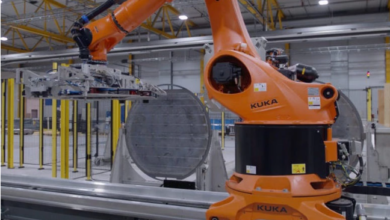Australia, India to set up green hydrogen task force

India and Australia agreed to set up an Australia-India Green Hydrogen Task Force to jointly develop green hydrogen resources.
The Indian and Australian governments finalised the terms of reference of the task force, which will advise the two governments on accelerating the manufacture and deployment of clean hydrogen, with a focus on hydrogen electrolysers, fuel cells and creating infrastructure and regulations that support these aims, a press release from Narendra Modi’s office said.
“The task force will comprise Australian and Indian experts in renewable hydrogen and report to the Australian-Indian Ministerial Energy Dialogue on the opportunities which are there for Australia and India to cooperate in this important area of renewable hydrogen,” Anthony Albanese said.
The announcement of the task force follows discussions between Modi and senior officials of Australian companies on investment opportunities for the two countries, which form half of the four-member Quad security dialogue and have forged closer relations in recent years. The Indian prime minister’s office said on 23 May that Modi met Australian mining magnate Andrew Forrest to discuss Fortescue’s work with Indian companies on green hydrogen.
The office said Modi discussed India’s ambitious renewable energy strategy including Delhi’s green hydrogen mission, while Forrest briefed the Indian prime minister on Fortescue Future Industries’ (FFI) plans and projects in India.
India is Australia’s sixth largest trading partner with trade in goods and services valued at A$46.5bn ($30.7bn) in 2022, with coal shipments from Australia comprising a major chunk. India imported 45.53mn t of Australian coking coal last year, down from 2021’s 54.25mn t but remaining the top destination for the commodity, a position it has held for a decade ahead of Japan.
But Australia supplied zero volumes of iron ore to India in 2022, according to data from the Australian Bureau of Statistics (ABS), as it struggles to diversify its markets despite a desire by major exporters to access its burgeoning steel market. Australia’s thermal coal exports to India in 2022 dived by 48pc from 2021 to 9.48mn t because of record high prices.
Albanese has set his 12-month-old government on a path to developing renewable energy sources, to eventually replace the nation’s major exports of LNG and coal through a more ambitious 2030 greenhouse gas (GHG) emissions reduction goal than his predecessor.
But Australia is reviewing its support for hydrogen as it grapples with generous tax breaks and subsidies being offered worldwide, with the federal government concerned it is losing its edge despite a pipeline of projects representing 40pc of proposed green hydrogen developments. A recently announced funding scheme for hydrogen aims to subsidise two or three projects totalling 1GW of electrolyser capacity by 2030.
India announced a National Green Hydrogen Mission in January targeting 5mn t/yr of domestic green hydrogen production by 2030, with the potential to reach 10mn t/yr with the growth of export markets. India’s cabinet approved an initial outlay of 197.44 billion rupees ($2.39bn) for the mission, with much of the funding used to incentivise domestic hydrogen production and electrolyser manufacturing. India plans to grow its installed renewables capacity to 500GW by 2030 from 125GW currently to help meet the government’s target of reaching net-zero emissions by 2070.
